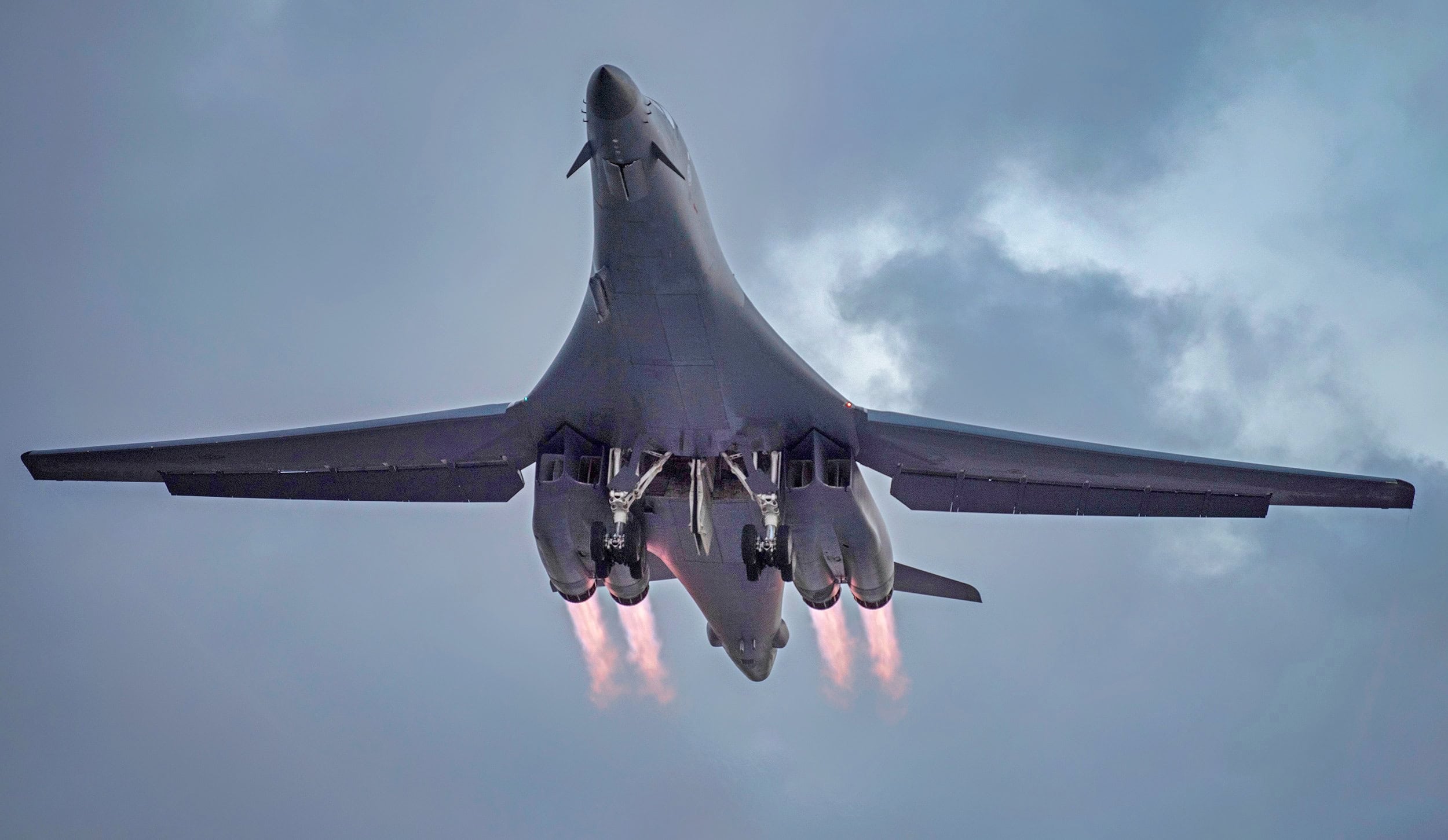Over a year ago, a previously-retired B-1B Lancer bomber aircraft was pulled from the boneyard to replace an active-duty aircraft that had been damaged.
That aircraft had caught fire two years before while undergoing maintenance and suffered US $15 million in damage.
The aircraft, nicknamed “Lancelot,” was brought out of storage not just because the cost to repair the other fire-damaged B-1 was prohibitive.
The other factor was that there is a congressional mandate that the USAF maintain a fleet of 45 operational B-1Bs until a complete transition can be made to the B-21 Raider bomber.
The Lancelot was one of four aircraft that were rated as being the best candidates for re-activation, according to Joseph Stupic, senior materiel leader at the B-1 program office, who spoke about Lancelot to the Air Force Times.
“This was the one that was probably the best for not requiring as much work,” Stupic said at the tim. “Some of them need structural updates and structural repairs. We looked at it and said, ‘Hey, the structure on this plane is pretty good. We can bring it into the fleet at a lower cost.’”
B-1B Lancer: In The Beginning…
The original B-1 fleet was born in the years of then-President Ronald Reagan’s defense build-up. In October 1981 he asked Congress for funding to build 100 of the aircraft.
The B-1 had been a major talking point of the 1980 presidential campaign. The former California Governor used it as a prop in charging sitting president Jimmy Carter with showing weakness in the face of the Soviet Union’s own nuclear modernization efforts by canceling the program.
Reagan and his first Defense Secretary, Caspar W. Weinberger, described the B-1 and other initiatives like the M-X ICBM program as stopgap measures necessary in order to close the “window of vulnerability” with the USSR.
When he first entered the office of US President, Reagan was given a choice: re-start the now-canceled B-1 or instead put the billions that this aircraft would cost into what was then referred to as the “stealth bomber” – now known as the Northrop B-2.
Recognizing that the USAF would eventually need to carry out a wide spectrum of missions, Reagan decided to buy both.
In this manner, the two aircraft’s time in service would “dovetail” with one another.
The result was by the end of his second term, the B1-Bs were already in service while B-2s were already being assembled on the production line.
Changing Mission
The B-1B Lancer was initially supposed to replace the B-52 as the primary strategic platform for the USAF.
This changed when it became possible for the older B-52s to fire long-range air-launched cruise missiles (ALCM) at stand-off range.
The B-2 coming into service in the 1990s further reduced the need for the B-1 to deliver nuclear packages and mandated it to become an aircraft to be used for conventional strike missions.
In the summer of 2022, the USAF 7th Bomb Wing commander, Col. Joseph Kramer, summarized the various phases that the B-1 had passed through as it transitioned from nuclear to conventional functions.
The technology incorporated into the B-1, specifically targeting pods, permitted precision-guided munitions to be delivered by the aircraft.
In the latter phases, as the aircraft became “very effective in the U.S. Central Command (CENTCOM) area of operations, the B-1 carried an advanced targeting pod that permitted it to loiter overhead and strike individual vehicles with precision,” he explained.
“In its fifth and current phase of operations, the B-1 can launch guided cruise missiles like the long-range guided anti-ship missile (LRASM) hundreds of miles from its target and strike it with precision.”
During the coming years while the force transitions to the B-21 Raider, the USAF will continue to sustain the B-1 fleet, said Kramer.
“The B-1 may fight a future war from its home base. The B-1 could fly from Dyess to its target, return to Dyess and turn around to prepare to fly another mission,” he said.
Why Retirement of B-1B Lancer?
This previous change to the conventional mission is the reason for the reduction from a fleet of 100 down to 45.
The question is what is now driving a decision to retire the B-1B Lancer altogether. At the heart of the decision is the desire of the USAF to reduce a four-bomber fleet (B-1, B-2, B-52 and B-21) down to a bomber force that operates only the last two in the list.
In December 2024, USAF Maj. Gen. Jason R. Armagost explained “it’s conditions-based on how we retire platforms. And so those conditions can change day-to-day, moment-to-moment, but I think there’s a very good plan for how we on-board the new, and we will not off-board the old just on a specific date. It will be conditions-based.”
Armagost said another factor leading to retiring both the B-1 and B-2 is that the B-21 has capabilities well beyond those of current bombers.
“We’re really trying to figure out … how to employ this differently, because it’s a different kind of airplane,” he said. “It’s sixth-generation stealth, and we can do some very, very interesting things with it that allow us to contest airspace [and] gain access for the penetrating force.”
About the Author: Reuben F. Johnson
Reuben F. Johnson is a survivor of the February 2022 Russian invasion of Ukraine and is now an Expert on Foreign Military Affairs with the Fundacja im. Kazimierza Pułaskiego in Warsaw. He has been a consultant to the Pentagon, several NATO governments and the Australian government in the fields of defense technology and weapon systems design. Over the past 30 years he has resided in and reported from Russia, Ukraine, Poland, Brazil, the People’s Republic of China and Australia.

